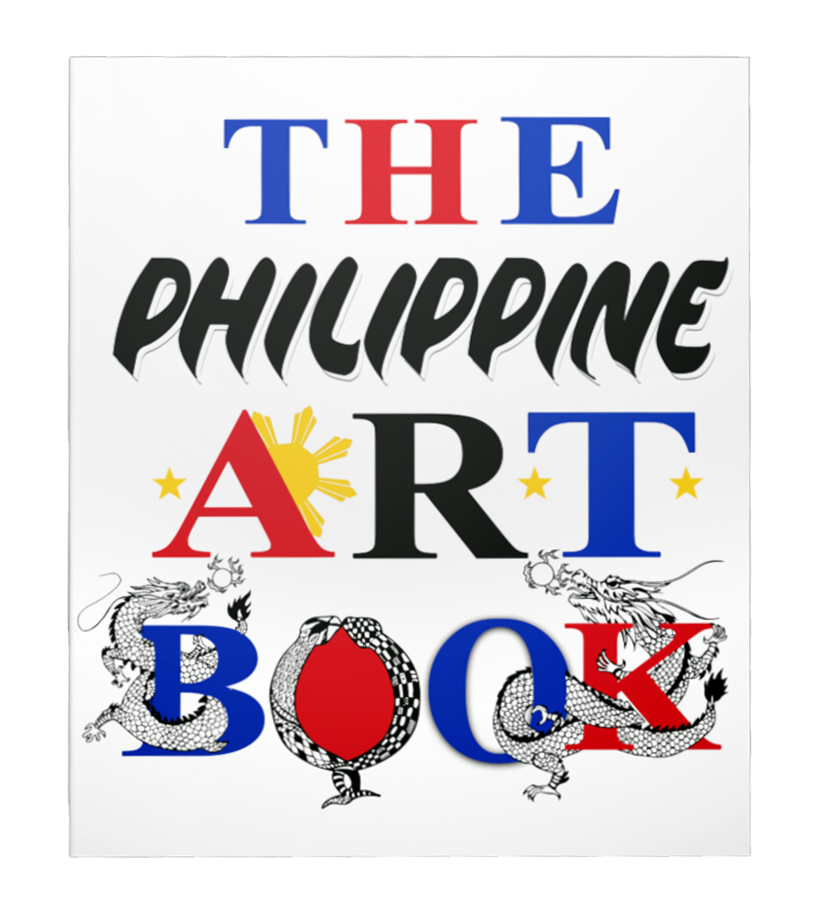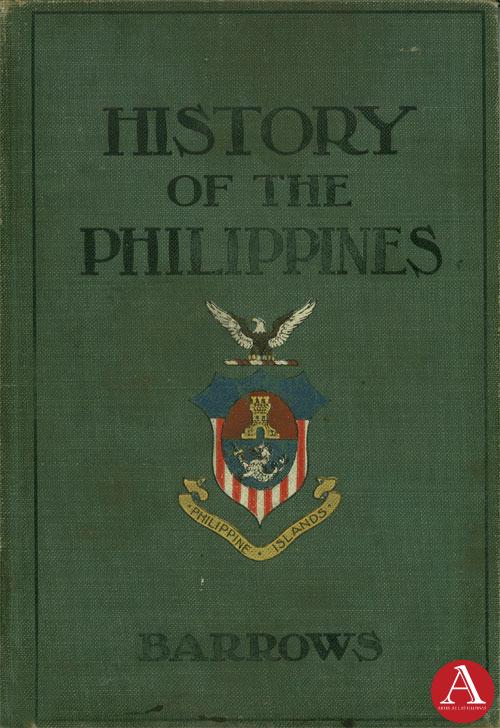
THE FILIPINO PEOPLE BEFORE THE ARRIVAL OF THE SPANIARDS
by: David P. Barrows, Ph.D.
April-May 2016--Position of Tribes – on the Spaniards, the population of the Philippines seems to have been distributed by tribes in much the same manner as at present. Then, as now, the Bisayas occupied the central islands of the archipelago and some of the northern coast of Mindanao. The Bikols, Tagalogs, and Pampangos were in the same parts of Luzon as we find them today. The Ilokanos occupied the coastal plain facing the China Sea, but since the arrival of the Spaniards they have expanded considerably and their settlement are now numerous in Pangasinan, Nueva Vizcaya, and the valley of the Cagayan.
The Number of People – These tribes which to-day number nearly 7,000,000 souls, at the time of Magellan’s discovery aggregated not more than 500,000. An early enumeration of the population made by the Spaniards in 1591, which included practically all of these tribes, gave a population of less than 700,000. (See chapter VIII., The Philippines Three Hundred Years Ago.)
There are other facts too that show us how sparse the population must have been. The Spanish expeditions found many coasts and islands in the Bisayan group without inhabitants. Occasionally a sail or a canoe would be seen, and then these would disappear in some small “estero” or mangrove swamp and the land seem as unpopulated as before. At certain points, like Limasaua, Butuan, and Bohol, the natives were more numerous, and Cebu was a large and thriving community; but the Spaniards had nearly everywhere to search for settled places and cultivated lands.
The sparseness of population is also well indicated by the great scarcity of food. The Spaniards had much difficulty in securing sufficient provisions. A small amount of rice, a pig and a few chickens, were obtainable here and there, but the Filipinos had no large supplies. After the settlement of Manila was made, a large part of the food of the city was drawn from China. They very ease with which the Spaniards marched where they willed and reduced the Filipinos to obedience shows that the latter were weak in numbers. Laguna de Bay and the Camarines were among the most populous portions of the archipelago. All of these and others show that the Filipinos were but a small fraction of their present number.
On the other hand, the Negritos seem to have been more numerous, or at least more in evidence. They were immediately noticed on the island of Negros, where at the present they are few and confined to the interior; and in the vicinity of Manila and in Batangas, where they are no longer found, they were mingling with the Tagalog population.
Conditions of Culture – The culture of the various tribes, which is now quite the same throughout the archipelago, presented some differences. In the southern Bisayas, where the Spaniards first entered the archipelago, there seem to have been two kinds of natives: the hill dwellers, who lived in the interior of the islands in small numbers, who wore garments of tree bark and who sometimes built their houses in the trees; and the sea dwellers, who were very much like the present day Moro tribes south of Mindanao, who are known as the Samal, and who built their villages over the sea or on the shore and lived much in boats. These were probably later arrivals than the forest people. From both of these elements the Bisaya Filipinos are descended, but while the coast people have been entirely absorbed, some of the hill-folk are still pagan and uncivilized, and must be very much as they were when the Spaniards first came.
The highest grade of culture was in the settlements where there was regular trade with Borneo, Siam, and China, and especially about Manila, where many Mohamedan Malays had colonized.
Languages of the Malayan Peoples – With the exception of the Negrito, all the languages of the Philippines belong to one great family, which has been called the “Malayo-Polynesian.” All are believed to be derived from one very ancient mother-tongue. It is astonishing how widely these Malayo-Polynesian tongues have spread. Farthest east in the Pacific are the Polynesian languages, then those of the small islands known as Micronesia; then Melanesian or Papuan; the Malayan throughout the East Indian archipelago, and to the north the languages of the Philippines. But this is not all; for far westward on the coast of Africa is the island of Madagascar, many of whose languages have no connection with African but belong to the Malayo-Polynesian family.
The Tagalog Language – it should be a matter of great interest to Filipinos that the great scientist, Baron William von Humboldt, considered the Tagalog to be the richest and most perfect of all the languages of the Malayo-Polynesian family, and perhaps the type of them all. “It possesses,” he said, “all the forms collectively of which particular ones are found in other dialects; and it has preserved them all with very trifling exceptions unbroken, and in entire harmony and symmetry.” The Spanish friars, on their arrival in the Philippines, devoted themselves at once to learning the native dialects and to the preparation of prayers and catechisms in these native tongues. They were very successful in their studies. Father Chirino tells us one Jesuit who learned sufficient Tagalog in seventy days to preach and hear confession. In this way the Bisayan, the Tagalog, and the Ilokano were soon mastered.
In the light of the opinion of Von Humboldt, it is interesting to find these early Spaniards pronouncing the Tagalog the most difficult and the most admirable. “Of all them,” says Padre Chirino, “the one which most pleased me and filled me with admiration was the Tagalog. Because, as I said to the first archbishop, and afterwards to other serious persons, both there and here, I found in it four qualities of the four best languages of the world: Hebrew, Greek, Latin, and Spanish; of the Hebrew the mysteries and obscurities; of the Greek, the articles and the precision not only of the appellative but also of the proper nouns; of the Latin, the wealth and elegance; and of the Spaniards, the good breeding, politeness, and courtesy.”
An early Connection with the Hindus – The Malayan languages contain a considerable proportion of words borrowed from the Sanskrit, and in this the Tagalog, Bisayan, and Ilokano are included. Whether these words were passed along from one Malayan group to another, or whether they were introduced by the actual presence and power of the Hindu in this archipelago, may be fair ground for debate; but he case for the latter position has been so well and brilliantly put by Dr. Pardo de Tavera that his conclusions are here given in his own words. “The words which Tagalog borrowed,” he says, “are those which signify intellectual acts, moral conceptions, emotions, superstitions, names of deities, of planets, of numerals of high number, of botany, of war and its results and consequences and, finally of titles and dignities, some animals, instruments of industry, and the names of money.”
From the evidence of these words, Dr. Pardo argues for a period in the early history of the Filipinos, not merely of commercial intercourse, like that of the Chinese, but of Hindu political and social domination. “I do not believe,” he says, “and I base my opinion on the same words that I have brought together in this vocabulary, that the Hindus were here simply as merchants, but that they dominated different parts of the archipelago, where to-day are spoken the most cultured languages, - the Tagalo, the Visayan, the Pampanga, and the Ilocano; and that the higher culture of these languages comes precisely from the influence of the Hindu race over the Filipino.”
The Hindus in the Philippines. – “It is impossible to believe that the Hindus, if they came only as merchants, however great their number, would have impressed themselves in such a way as to give to these islanders the number and the kind of words which they did give. These names of dignitaries, of caciques, of high functionaries of the court, of noble ladies, indicate that all of these high positions with names of Sanskrit origin were occupied at one time by men who spoke that language. The words of a similar origin for objects of war, fortresses, and battle-songs, for designating objects of religious belief, for superstitions, emotions, feelings, industrial and farming activities, show us clearly that the warfare, religion, literature, industry, and agriculture were at one time in the hands of the Hindus, and that this race was effectively dominant in the Philippines.”
Systems of Writing among the Filipinos - When the Spaniards arrived in the Philippines, the Filipinos were using systems of writing borrowed from Hindu or Javanese sources. This matter is so interesting that one cannot do better than to quote in full Padre Chirino’s account, as he is the first of the Spanish writers to mention it and as his notice is quite complete.
“So given are these islanders to reading and writing that there is hardly a man and much less a women, that does not read and write in letters peculiar to the island of Manila, very different from those of China, Japan, and of India, as will be seen from the following alphabet.
“The vowels are three; but they serve for five, and are,

The consonants are no more than twelve, and they serve to write both consonant and vowel, in this form. The letter alone, without any point either above or below, sounds with a. For instance, in order to say ‘cama,’ the two letters alone suffice.
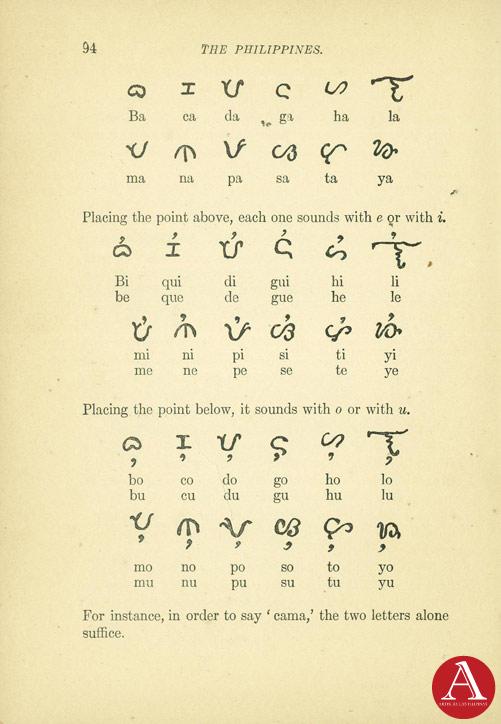
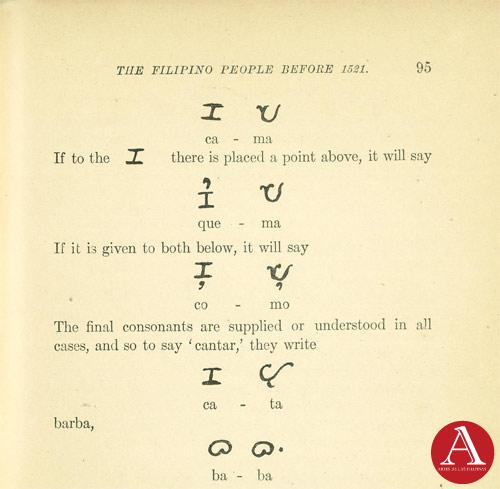
But with all, and that without many evasions, they make themselves understood, and they themselves understand marvelously. And the reader supplies, with much skill and ease, the consonants that are lacking. They have learned from us to write running the lines from the left hand to the right, but formerly they only wrote from above downwards, placing the first line (if I remember rightly) at the left hand, and continuing with the others to the right, the opposite of the Chinese and Japanese…. They write upon canes or on leaves of a palm, using for a pen a point of iron. Nowadays in writing not only their own but also our letters, they use a quill very well cut, and paper like ourselves.
They have learned our language and pronunciation, and write as well as we do, and even better; for they are so bright that they learn everything with the greatest ease. I have brought with me handwriting with very good and correct lettering. In Tigbauan, I had in school a very small child, who in three months’ time learned, by copying from well-written letters that I set him, to write enough better than I, and transcribed for me writings of importance very faithfully, and without errors or mistakes. But enough of languages and letters; now let us return to our occupation with human souls.”
Sanskrit Source of the Filipino Alphabet – Besides the Tagalogs, the Bisayas, Pampangos, Pangasinans, and Ilokanos had alphabets, or more properly syllables similar to this one. Dr. Pardo de Tavera has gathered many data concerning them, and shows that they were undoubtedly received by the Filipinos from a Sanskrit source.
Early Filipino Writings – The Filipinos used this writing for setting down their poems and songs, which were their only literature. None of this, however, has come down to us, and the Filipinos soon adopted the Spanish alphabet, forming the syllables necessary to write their language from these letters. As all these have phonetic values, it is still very easy for a Filipino to learn to pronounce and so read his own tongue. These old characters lingered for a couple of centuries, in certain places. Padre Totanes tell us that it was rare in 1705 to find a person who could use them; but the Tagbanwas, a pagan people on the island of Palawan, use a similar syllabary to this day. Besides poems, they had songs which they sang as they rowed their canoes, as they pounded the rice from its husk, and as they gathered for feast or entertainment; and especially there were songs for the dead. In these songs, says Chirino, they recounted the deeds of their ancestors or their deities.
Chinese in the Philippines – Early Trade – Very different from the Hindu was the early influence of the Chinese. There is no evidence that, previous to the Spanish conquest, the Chinese settled or colonized in these islands at all; and yet three hundred years before the arrival of Magellan their trading-fleets were coming here regularly and several of the islands were well known to them. One evidence of this prehistoric trade is in the ancient Chinese jars and pottery which have been exhumed in the vicinity of Manila, but the Chinese writings themselves furnish us even better proof. About the beginning of the thirteenth century, though not earlier than 1205, a Chinese author named Chao Ju-kua wrote a work upon the maritime commerce of the Chinese people. One chapter of his work is devoted to the Philippines, which he calls the country of Mayi. According to this record it is indicated that the Chinese were familiar with the islands of the archipelago seven hundred years ago.
Chinese Description of the People – “The country of Mayi,” says this interesting classic, “is situated to the north of Poni (Burney, r Borneo). About a thousand families inhabit the banks of a very winding stream. The natives clothe themselves in sheets of cloth resembling bed sheets, or cover their bodies with sarongs. (The sarong is the gay colored, typical garment of the Malay.) Scattered through the extensive forests are copper Buddha images, but no one knows how they got there. “When the merchant (Chinese) ships arrive at this port they anchor in front of an open place… which serves as a market, where they trade in the produce of the country. When a ship enters this port, the captain makes presents of white umbrellas (to the mandarins). The merchants are obliged to pay this tribute in order to obtain the good will of these lords.” The products of the country are stated to be yellow wax, cotton, pearls, shells, betel nuts, and yuta cloth, which was perhaps one of the several cloths still woven of abaca, or pina. The articles imported by the Chinese were “porcelain, trade gold, objects of lead, glass beads of all colors, iron cooking-pans, and iron needles.”

The Negritos – Very curious is the accurate mention in this Chinese writing, of the Negritos, the first of all accounts to be made of the little blacks. “In the interior of the valleys lives a race called Hai-tan (Aeta). They are of low stature, have reound eyes of a yellow color, curly hair, and their teeth are easily seen between their lips. (That is, probably, not darkened by betel-chewing or artificial stains.) They build their nests in the treetops and in each nest lives a family, which only consists of from three to five persons. They travel about in the densest thicket of the forests, and, without being seen themselves, shoot their arrows at the passers-by; for this reason they are much feared. If the trader (Chinese) throws them a small porcelain bowl, they will stoop down to catch it and then run away with it, shouting joyfully.”
Increase in Chinese Trade – These junks also visited the more central islands, but here traffic was conducted on the ships, the Chinese on arrival announcing themselves by beating gongs and the Filipinos coming out to them in their light boats. Among other things here offered by the natives for trade are mentioned “strange cloth,” perhaps sinamay or jusi, and fine mats.
This Chinese trade continued probably quite steadily until the arrival of the Spaniards. Then it received an enormous increase through the demand for Chinese food products and wares made by the Spaniards, and because of the value of the Mexican silver which the Spaniards offered in exchange.
Trade with the Moro of the South – The spread Mohammedanism and especially the foundation of the colony of Borneo brought the Philippines into important commercial relations with the Malays of the south. Previous to the arrival of the Spaniards these relations seem to have been friendly and peaceful. The Mohammedan Malays sent their praus northward for purposes of trade, and they were also settling in the north Philippines as they had in Mindanao.
When Legazpi’s fleet, soon after its arrival, lay near the island of Bohol, Captain Martin de Goiti had a hard fight with a Moro vessel which was cruising for trade, and took six prisoners. One of them, whom they call the “Pilot,” was closely interrogated by the commander and some interesting information obtained, which is recorded by Padre San Augustin. Legaspi had a Malay slave interpreter with him and San Augustin says that Padre Urdaneta “knew well the Malayan language.” The pilot said that “those of Borneo brought for trade with the Filipinos, copper and tin, which was brought to Borneo from China, porcelain, dishes, and bells made in their fashion, very different from those that the Christians use, and benzoin, and colored blankets from India, and cooking pans made in China, and that they also brought iron lances very well tempered, and knives and other articles of barter, and that in exchange for them they took away from the islands gold, slaves, wax, and a kind of small seashell which they call ‘sijueyes’ and which passes for money in the kingdom of Siam and other places; and also they carry off some white cloths, of which there is a great quantity in the islands.”
Butuan, on the north coast of Mindanao, seems to have been white a trading-place resorted to by vessels from all quarters. This region, like many other parts of the Philippines, has produces from time immemorial small quantities of gold, and all the early voyagers speak of the gold earrings and ornaments of the natives. Butuan also produced sugarcane and was a trading-port for slaves. This unfortunate traffic in human life seems to have been not unusual, and was doubtless stimulated by the commerse with Borneo. Junks from Siam trading with Cebu were also encountered by the Spaniards.
Result of this Intercourse and Commerce – This intercourse and traffic had acquainted the Filipinos with many of the accessories of civilized life long before the arrival of the Spaniards. Their chiefs and datos dresses in silks, and maintained some splendor of surroundings; nearly the whole population of the tribes of the coast wrote and communicated by means of a syllabary; vessels from Luzon traded as far south as Mindanao and Borneo, although the products of Asia proper came through the fleets of foreigners; and perhaps what indicates more clearly than anything else the advance the Filipinos were making through their communication with outside people is their use of firearms. Of this point there is no question. Everywhere in the vicinity of Manila, on Lubang, in Pampanga, at Cainta and Laguna de Bay, the Spaniards encountered forts mounting small cannon, or “lantakas” The Filipinos seem to have understood, moreover, the arts of casting cannon and of making powder. The first gun-factory established by the Spaniards was in charge of a Filipino from Pampanga.

Early Political and Social Life - The Barangay – The weakest side of the culture of the early Filipinos was their political and social organization, and they were weak here in precisely the same way that the now uncivilized peoples of northern Luzon are still weak. Their state did not embrace the whole tribe or nation; in included simply the community. Outside of the settlers in one immediate vicinity, all others were enemies or at most foreigners. There were in the Philippines no large states, nor even great rajas and sultans such as were found in the Malay Archipelago, but instead on every island were a multitude of small communities, each independent of the other and frequently waging war.
The unit of their political order was a little cluster of houses of from thirty to one hundred families, called a “barangay,” which still exists in the Philippines as the “barrio.” At the head of each barangay was a chief known as the “dato,” a word no longer used in the northern Philippines, though it persists among the Moros of Mindanao. The powers of these datos within their small areas appear to have been great, and they were treated with utmost respect by the people.
The barangays were grouped together in tiny federations including about as much territory as the present towns, whose affairs were conducted by the chiefs or datos, although sometimes they seem to have all been in obedience to single chief, known in some places as the “hari,” at other times by the Hindu word “raja,” or the Mohammedan term “sultan.” Sometimes the power of one of these rajas seems to have extended over the whole of a small island, but usually their “kingdoms” embraced only a few miles.
Changes Made by the Spaniards – The Spaniards, in enforcing their authority through the islands, took away the real power from the datos, grouping the barangays into town, or “pueblos,” and making the datos, headmen, caciques or principales. Something of the old distinction between the dato, or “principal,” and the common man may be still represented in the “gente ilustrada,” or the more wealthy, eaducated, and influential class found in each town, and the “gente baja,” or the poor and uneducated.
Classes of Filipinos under the Datos – Beneath the datos, according to Chirino and Morga, there three classes of Filipinos. First were the free “maharlika,” who paid no tribute to the dato, but who accompanied him to war, rowed his boat when he went on a journey, and attended him in his house. This class is called by Morga “timauas.”
Then there was a very large class, who appear to have been freedmen or liberated slaves, who had acquired their own homes and lived with their families, but who owed to dato or maharlika heavy debts of service; to sow and harvest in his rice fields, to tend his fish-traps, to row his canoe, to build his house, to attend him when he had guests, and to perform any other duties that the chief might command,” and their condition of bondage descended to their children.
Beneath these existed a class of slaves. These were the “siguiguiliris,” and they were numerous. Their slavery arose in several ways. Some were those who as children had been captured in war and their lives spared. Some became slaves by selling their freedom in times of hunger. But most of them became slaves through debt, which descended from father to son. A debt of five or six pesos was enough in some cases to deprive a man of his freedom.
These slaves were absolutely owned by their lord, who could theoretically sell them like cattle; but, in spite of its bad possibilities, this Filipino slavery was apparently not of a cruel or distressing nature. The slaves frequently associated on kindly relations with their masters and were not overworked. This form of slavery still persists in the Philippines among the Moros of Mindanao and Jolo. Children of slaves inherited their parents’ slavery. If one parent was free and the other slave, the first, third, and fifth children were free and the second, fourth, and sixth slaves. This whole matter of inheritance of slavery was curiously worked out in details.
Life in the Barangay – Community feeling was very strong within the barangay. A man could not leave his own barangay for life in another without the consent of the community and the payment of money. If a man of one barrio married a women of another, their children were divided between the two barangays. The barangay was responsible for the good conduct of its members, and if one of them suffered an injury from a man outside, the whole barangay had to appeased. Disputes and wrongs between members of the same barangay were referred to number of old men, who decided the matter in accordance with the customs of the tribe, which were handed down by tradition.
The Religion of the Filipinos – The Filipinos on the arrival of the Spaniards were fetish-worshipers, but they had one spirit whom they believed was the greatest of all and the creator or maker of things. The Tagalogs called this deity Bathala, the Bisayas, Laon, and the Ilokanos, Kabunian. They also worshiped the spirits of their ancestors, which were represented by small images called “anitos.” Fetishes, which are any objects believed to possess miraculous power, were common among the people, and idols or images were worshiped. Pigafetta describes some idols which he saw in Cebu, and Chirino tells us that, within the memory of Filipinos whom he knew, they had idols of stone, wood, bone, or the tooth of a crocodile, and that there were some of gold.
They also reverenced animals and birds, especially the crocodile, the crow, and a mythical bird of blue or yellow color, which was called by the name of their deity Bathala. They had no temples or public places of worship, but each one had his anitos in his own house and performed his sacrifices and acts of worship there. As sacrifices they killed pigs or chickens, and made such occasions times of feasting, song, and drunkenness. The life of the Filipino was undoubtedly filled with superstitious fears and imaginings.
The Mohammedan Malays – The Mohammedan outside of southern Mindanao and Jolo, had settled in the vicinity of Manila Bay and on Mindoro, Lubang, and adjacent coasts of Luzon. The spread of Mohammedanism was stopped by the Spaniards, although it is narrated that for a long time many of those living on the shores of Manila Bay refused to eat pork, which is forbidden by the Koran, and practiced the rite of circumcision. As late as 1583, Bishop Salazar, in writing to the king of affairs in the Philippines, says the Moros had preached the law of Mohammed to great numbers in these islands and by this preaching many of the Gentiles had become Mohammedans; and further he adds, “Those who have received this foul law guard it with much persistence and there is great difficulty in making them abandon it; and with cause too, for the reasons they give, to our shame and confusion, are that they were better treated by the preachers of Mohammed than they have been by the preachers of Christ.”
Material Progress of the Filipinos – The material surroundings of the Filipino before the arrival of the Spaniards were in nearly every way quite as they are to-day. The “center of population” of each town to-day, with its great church, tribunal, stores and houses of stone and wood, is certainly in marked contrast; but the appearance of a barrio a little distance from the center is to-day probably much as it was then. Then, as now, the bulk of the people lived in humble houses of bamboo and nipa raised on piles above the dampness of the soil; then, as now, the food was largely rice and the excellent fish which abound in river and sea. There were on the water the same familiar bancas and fish corrals, and on land the rice fields and cocoanut groves. The Filipinos had then most of the present domesticated animals, dogs, cats, goats, chickens, and pigs, and perhaps in Luzon the domesticated buffalo, although this animal was widely introduced into the Philippines from China after the Spanish conquest. Horses followed the Spaniards and their numbers were increased by the bringing in of Chinese mares, whose importation is frequently mentioned.
The Spaniards introduced also the cultivation of tobacco, coffee, and cacao, and perhaps also the native corn of America, the maize, although Pigafetta says they found it already growing in the Bisayas.
The Filipino has been affected by these centuries of Spanish sovereignty far less on his material side than he has on his spiritual, and it is mainly in the depending and elevating of his emotional and mental life and not in the bettering of his material condition that advance has been made.
SOURCE: Barrows, David P.. A History of the Philippines. World Book Company, Yonkers-On-Hudson, New York . 1914. pp. 88-107
NOTE: David P. Barrows, Ph.D was a professor and dean of the Graduate School in the University of California; formerly director of Education for the Philippine Islands. His book was prepared at the suggestion of the educational authorities for pupils in the public high schools of the Philippines as an introduction to the history of the country.
The aim of publishing this chapter is to provide a source material for the study of history of the Philippines.
Recent Articles
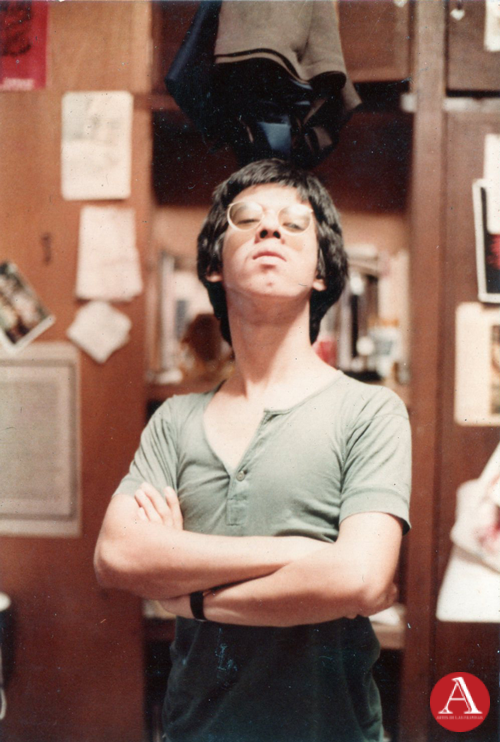 FEDERICO SIEVERT'S PORTRAITS OF HUMANISM
FEDERICO SIEVERT'S PORTRAITS OF HUMANISMJUNE 2024 – Federico Sievert was known for his art steeped in social commentary. This concern runs through a body of work that depicts with dignity the burdens of society to...
.png) FILIPINO ART COLLECTOR: ALEXANDER S. NARCISO
FILIPINO ART COLLECTOR: ALEXANDER S. NARCISOMarch 2024 - Alexander Narciso is a Philosophy graduate from the Ateneo de Manila University, a master’s degree holder in Industry Economics from the Center for Research and...
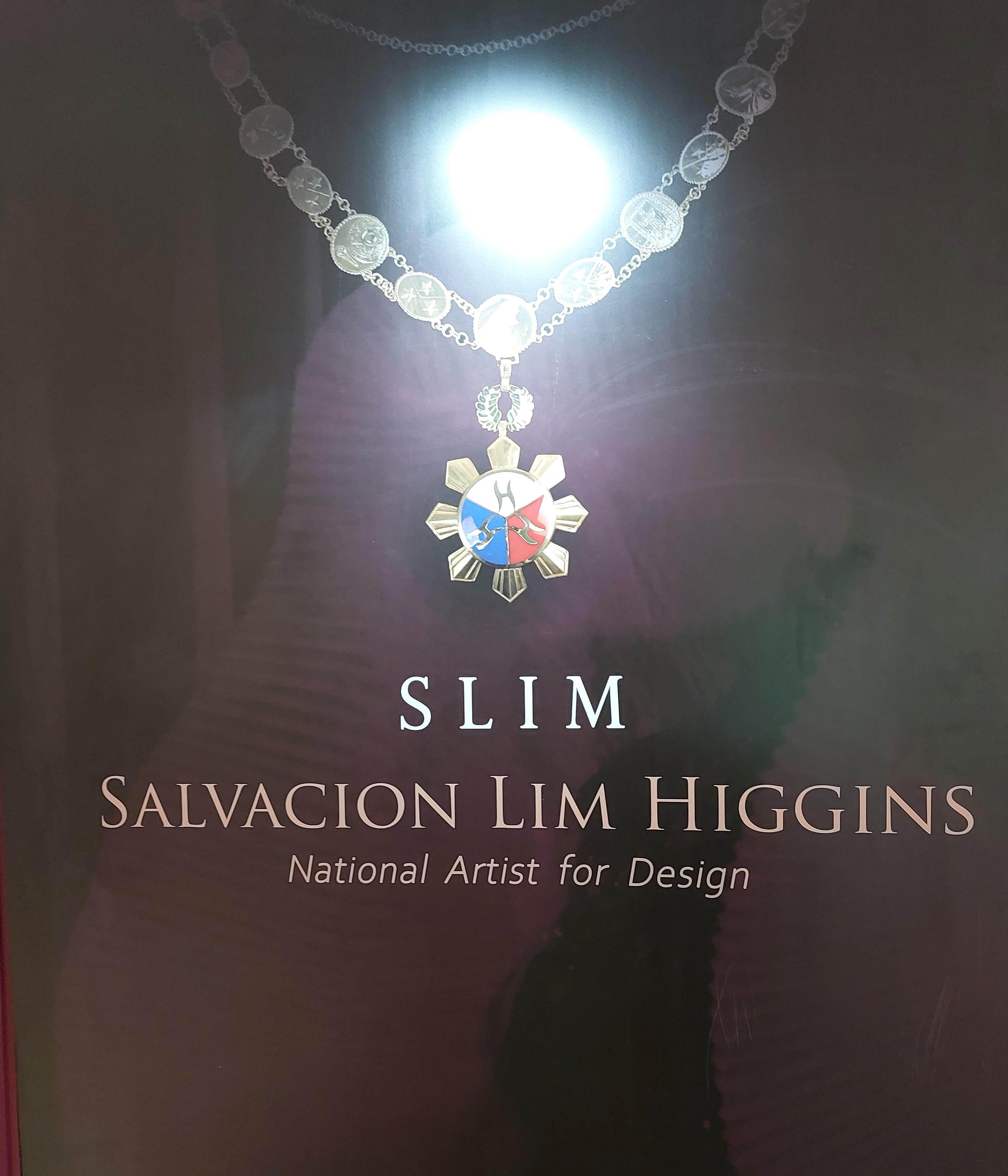 An Exhibition of the Design Legacy of Salvacion Lim Higgins
An Exhibition of the Design Legacy of Salvacion Lim HigginsSeptember 2022 – The fashion exhibition of Salvacion Lim Higgins hogged the headline once again when a part of her body of work was presented to the general public. The display...
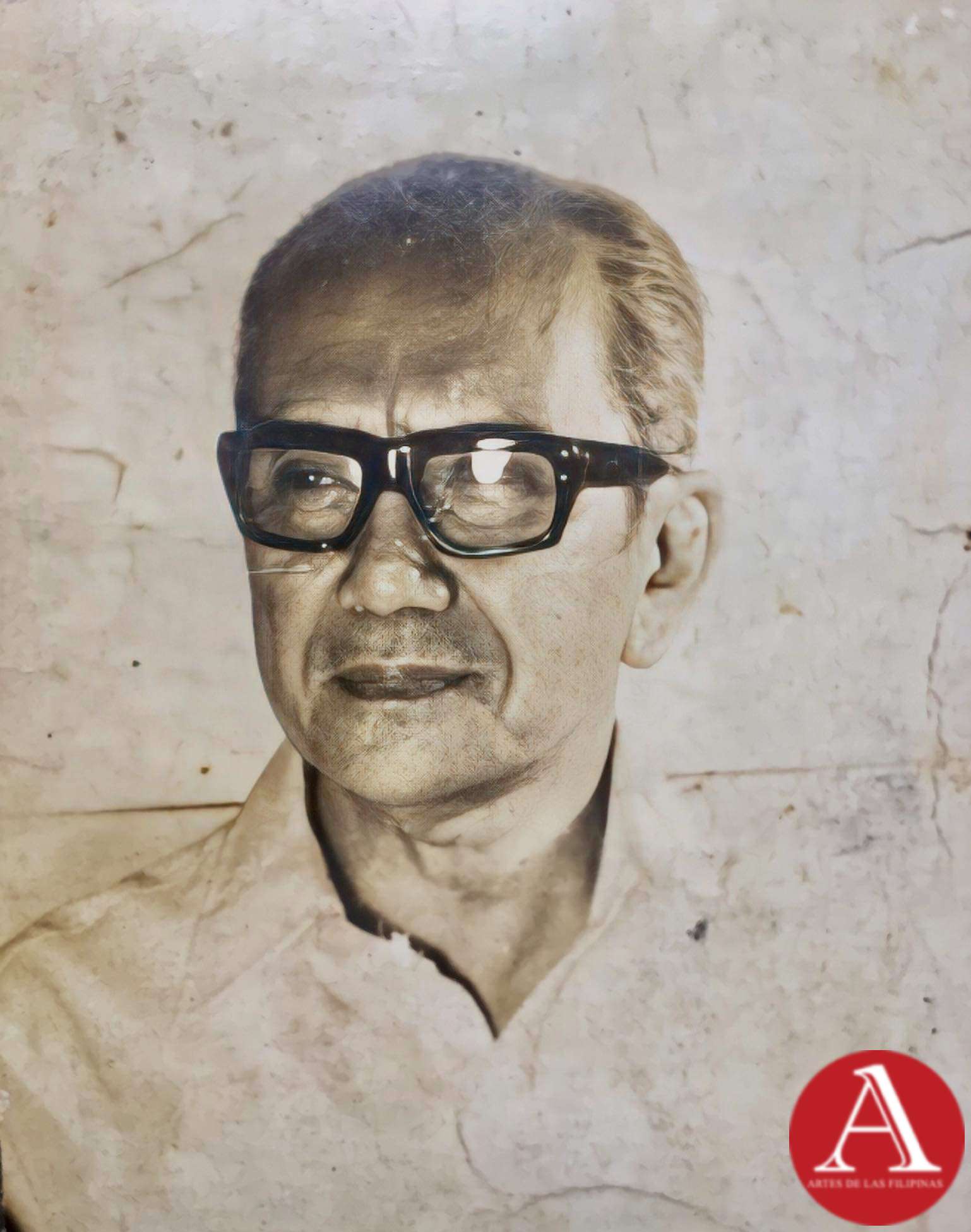 Jose Zabala Santos A Komiks Writer and Illustrator of All Time
Jose Zabala Santos A Komiks Writer and Illustrator of All TimeOne of the emblematic komiks writers in the Philippines, Jose Zabala Santos contributed to the success of the Golden Age of Philippine Komiks alongside his friends...
 Patis Tesoro's Busisi Textile Exhibition
Patis Tesoro's Busisi Textile Exhibition
The Philippine Art Book (First of Two Volumes) - Book Release April 2022 -- Artes de las Filipinas welcomed the year 2022 with its latest publication, The Philippine Art Book, a two-volume sourcebook of Filipino artists. The...
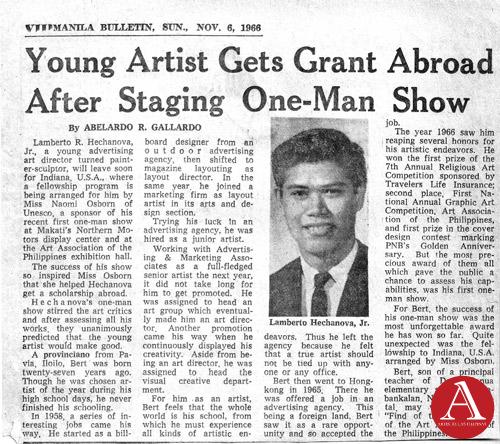 Lamberto R. Hechanova: Lost and Found
Lamberto R. Hechanova: Lost and FoundJune 2018-- A flurry of renewed interest was directed towards the works of Lamberto Hechanova who was reputed as an incubator of modernist painting and sculpture in the 1960s. His...
 European Artists at the Pere Lachaise Cemetery
European Artists at the Pere Lachaise CemeteryApril-May 2018--The Pere Lachaise Cemetery in the 20th arrondissement in Paris, France was opened on May 21, 1804 and was named after Père François de la Chaise (1624...
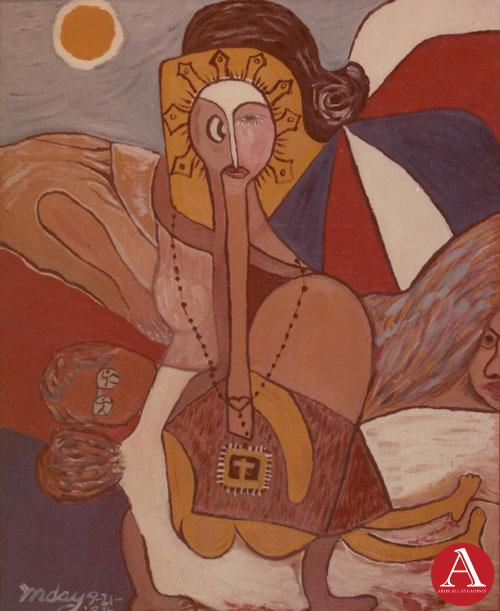 Inday Cadapan: The Modern Inday
Inday Cadapan: The Modern IndayOctober-November-December 2017--In 1979, Inday Cadapan was forty years old when she set out to find a visual structure that would allow her to voice out her opinion against poverty...
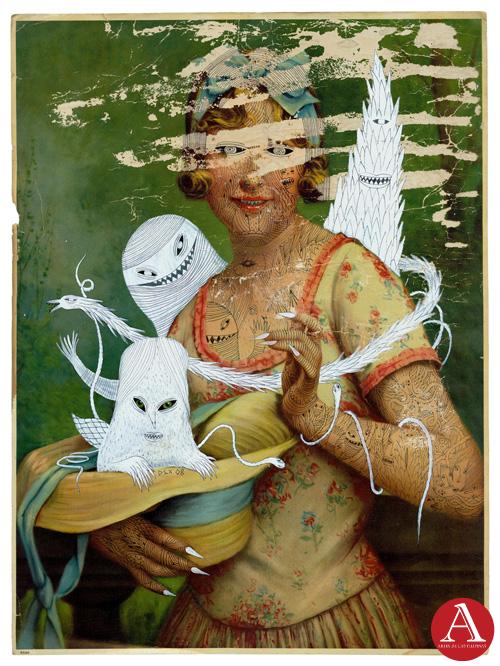 Dex Fernandez As He Likes It
Dex Fernandez As He Likes ItAugust-September 2017 -- Dex Fernandez began his art career in 2007, painting a repertoire of phantasmagoric images inhabited by angry mountains, robots with a diminutive sidekick,...




